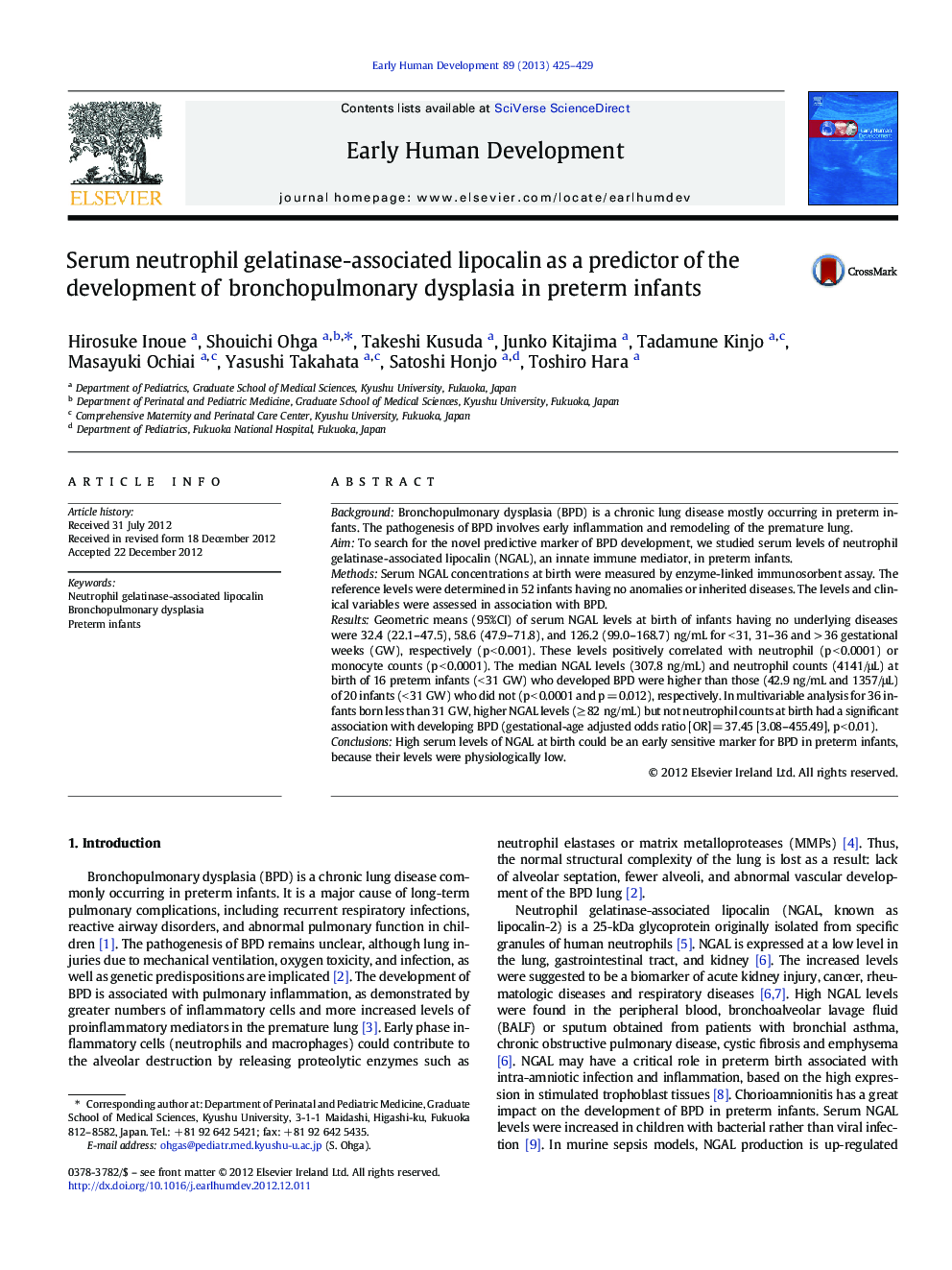| Article ID | Journal | Published Year | Pages | File Type |
|---|---|---|---|---|
| 3916689 | Early Human Development | 2013 | 5 Pages |
BackgroundBronchopulmonary dysplasia (BPD) is a chronic lung disease mostly occurring in preterm infants. The pathogenesis of BPD involves early inflammation and remodeling of the premature lung.AimTo search for the novel predictive marker of BPD development, we studied serum levels of neutrophil gelatinase-associated lipocalin (NGAL), an innate immune mediator, in preterm infants.MethodsSerum NGAL concentrations at birth were measured by enzyme-linked immunosorbent assay. The reference levels were determined in 52 infants having no anomalies or inherited diseases. The levels and clinical variables were assessed in association with BPD.ResultsGeometric means (95%CI) of serum NGAL levels at birth of infants having no underlying diseases were 32.4 (22.1–47.5), 58.6 (47.9–71.8), and 126.2 (99.0–168.7) ng/mL for < 31, 31–36 and > 36 gestational weeks (GW), respectively (p < 0.001). These levels positively correlated with neutrophil (p < 0.0001) or monocyte counts (p < 0.0001). The median NGAL levels (307.8 ng/mL) and neutrophil counts (4141/μL) at birth of 16 preterm infants (< 31 GW) who developed BPD were higher than those (42.9 ng/mL and 1357/μL) of 20 infants (< 31 GW) who did not (p < 0.0001 and p = 0.012), respectively. In multivariable analysis for 36 infants born less than 31 GW, higher NGAL levels (≥ 82 ng/mL) but not neutrophil counts at birth had a significant association with developing BPD (gestational-age adjusted odds ratio [OR] = 37.45 [3.08–455.49], p < 0.01).ConclusionsHigh serum levels of NGAL at birth could be an early sensitive marker for BPD in preterm infants, because their levels were physiologically low.
